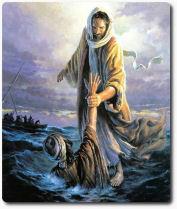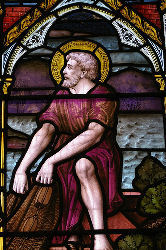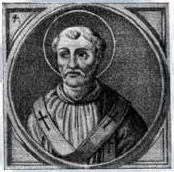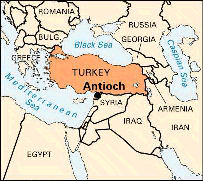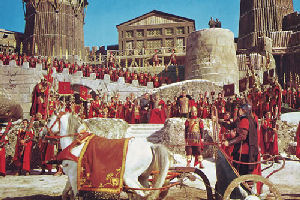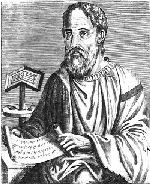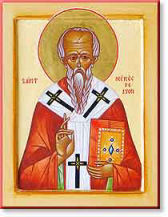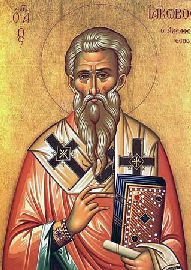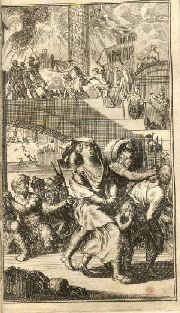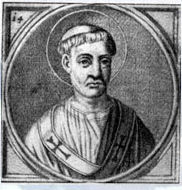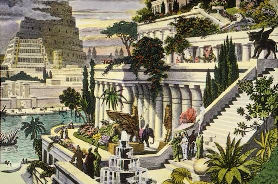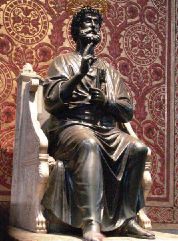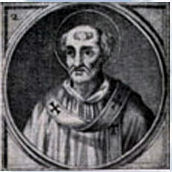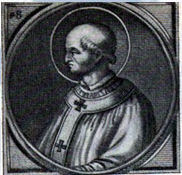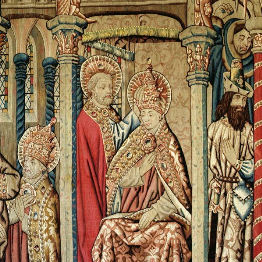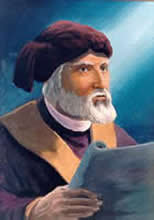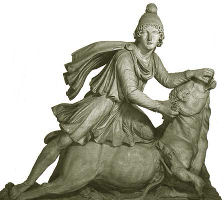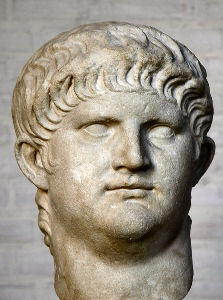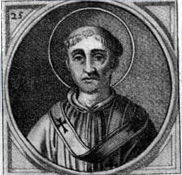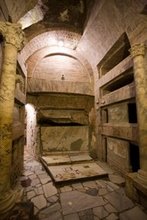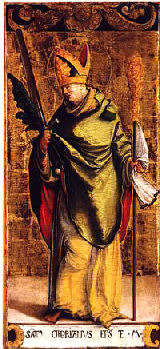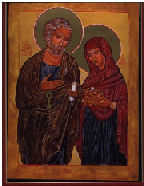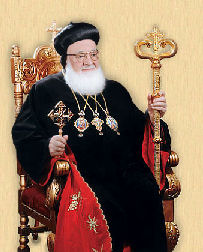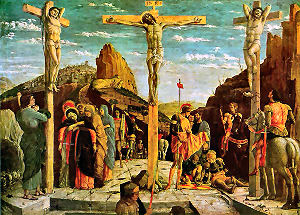Appendix 1: “I am the Pope.” “Says Who?”
Who’s on First?
Who wrote the rule that papal histories must begin with St. Peter? It is a pity because embarrassingly little is known about him personally, and absolutely nothing is known of his pontificate. “Peter,” of course, was his nickname; the gospels introduced him as a fisherman from Bethsaida named Simon. The Acts of the Apostles called him “unlearned and ignorant.” Surely discipling was not his full-time job during the gospel period; somehow he had to provide for his family. Family? Yes, Peter evidently was married. The scriptural evidence for this in Matthew 8, Mark 1, and Luke 4 mention his wife only in the genitive, “Peter’s wife’s mother,” which implies that Peter could have been a widower. The only other biblical reference (1 Corinthians 9:5) to her uses a peculiar Greek phrase that might not mean “wife” at all. The Petrine household must have been peculiar. Jesus and the apostles were borderline outlaws. What must Peter’s wife (or his wife’s mother!) have thought when he neglected his nets in favor of hanging with a rebellious Preacher? In his missionary years Peter reportedly visited nearly every corner of the Roman empire. Travel in those days was long, tiring, and dangerous. His career must have strained his family life horribly. The Bible does not mention Peter’s children. Our knowledge of them is at best third-hand. The fourth-century historian Eusebius quotes Clement, the fourth Bishop of Rome, as saying that “They say, accordingly, that when the blessed Peter saw his own wife led out to die, he rejoiced because of her summons and her return home, and called to her very encouragingly and comfortingly, addressing her by name, and saying, ‘Oh thou, remember the Lord.’”[1] Eusebius also quoted Clement’s statement that both Peter and Philip had children. In the next sentence Clement reported that Philip gave away his daughters in marriage, but there is no mention of Peter doing the same. Maybe all of Peter’s offspring were male; maybe he raised ugly daughters; maybe potential suitors were scared off by cautionary tales of Malchus’s ear. Virtually no claim about Peter stands uncontested, but most Christians agree that Peter served as bishop of[2] the important Christian center in which Jesus’s followers were first called Christians – not Rome but Antioch, in the southernmost part of modern Turkey. Christians learned of Peter’s role from Paul’s epistle that recounts how the author got in Peter’s face because he considered Peter’s refusal to eat with the Gentiles (Galatians 2:11-14) not to be Christlike. The text clearly established that both were in Antioch long before anyone placed Peter in Rome.The line of succession for subsequent Bishops of Antioch is fairly well-established.[3] Evodius succeeded Peter, Ignatius succeeded Evodius, and so on. So why is the largest Christian denomination not called the Antiochan Catholic Church? Why do Christian pilgrims not throng to Antakya, the city’s current name? The obvious explanation is that Peter apparently abandoned Antioch. Rome is where he was crucified upside-down, at least according to legend and Caravaggio.
Four additional reasons favor the emphasis on Rome. In the first place, Rome was the center of civilization. In the first century Antioch was an important city of perhaps a quarter of a million people, but it never threatened Rome’s dominant position. By the time of Rome’s collapse, Antioch had ceded preeminence in the east to Constantinople. Second, an ancient Christian tradition placed Peter in Rome for the last twenty-five years of his life. The primary written source is Eusebius’s fourth-century account in the Chronicon. Historians question quite a few of Eusebius’s claims, and Peter’s two and a half decades in Rome are difficult to reconcile with other claims about his whereabouts. No surviving contemporary account placed Peter in Rome, and nothing before Eusebius referred to Peter as the Bishop of Rome, much less the pope.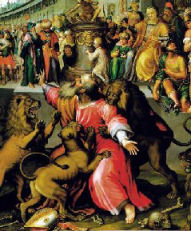
Ireneus did not specify Peter as the first Bishop of Rome. Indeed, his sixth bishop is named Sixtus, which is the Latin word for “sixth” not “seventh.” On the other hand, Hyginus, eighth on the list, is said to have “held the ninth place in the episcopal succession from the apostles downwards” in the first book of the treatise – but only in the surviving Greek version. The Latin version assigns him “the eighth place.” No convincing explanation of this discrepancy has surfaced. Even though Ireneus wrote more than a century after the death of the last apostle, his was the first known written account that implied that the Bishop of Rome descended from Peter (and Paul). Since subsequent writers were probably familiar with Ireneus’s writing, for eighteen centuries most believers have directly or indirectly taken Ireneus’s word for it.
Ireneus never mentioned the famous passage in Matthew 16 about the Keys of the Kingdom, lines that Rome deemed so crucial that their rendition into Latin by St. Jerome was inscribed in huge letters all the way around the dome of St. Peter’s Basilica. Ireneus wrote in Greek, not Latin, and he read Matthew in the original Greek.[8]Ireneus based Rome’s preeminence on the glory inherited from the time of Peter and Paul. What then of the not so distant future in which Rome’s glory evaporated? The city degenerated into a den of sin comparable to Sodom and Gomorrah. Later it became such a disgusting backwater that even its bishops refused to reside there!
Finally, it is useful to consider the context of Ireneus’s arguments; his avowed purpose was to denounce what he considered heresies. Eleutherius, the Bishop of Rome at the time, and Ireneus were evidently like-minded colleagues. The more seriously Eleutherius was taken, the more seriously Ireneus and his treatises were likely to be taken.Knowledgeable people have argued that St. Paul never considered Peter the Bishop of Rome. Paul never mentioned Peter in his epistle to the Romans. Some have concluded that Peter probably was not in town at the time of the epistle.[9] Catholics insist that the omission protected Peter from persecution. Maybe so, but Paul outed twenty-seven Roman Christians by name in the last chapter. Were they dispensable?
Peter himself wrote (assuming that he personally wrote or dictated the first epistle attributed to him) that he was in “Babylon.” Catholics take this as a metaphorical reference to Rome. If it is a codeword, it was the first such use in the New Testament. This subtlety seems a poor fit for the image of the sword-wielding fisherman of the gospels. “Bring it on!” would be less surprising than using such veiled references. “Rome” is never mentioned in Peter’s epistles.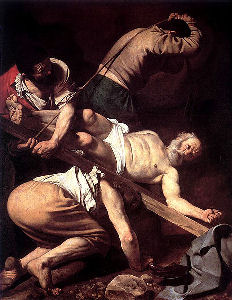
“On this rock I will build my church.” Sr. Mary Immaculata’s catechism unequivocally declared that the rock was Peter, and that an unbroken line of popes can be traced back to his bishopric. We never learned, however, that no contemporary of Peter called him the pope, and doubt remains whether anyone thought of him as the Bishop of Rome.
Was Peter the recognized leader of the Church in its first few decades? It is not obvious that he was. Peter’s role in the epistles and Acts does not seem overtly pontifical.[11] He was a strong, active apostle, but was he the boss? Did the Christian community defer to his judgment in every important decision? Who knows? Paul, who wasn’t even one of the original twelve, felt no qualms about dressing him down in Antioch. Maybe he was just kidding, or maybe it was an elaborate performance, but few would have dared to criticize the table manners of such pontiffs as Innocent III, Boniface VIII, John XXII, Urban VI, or Sixtus V. One thing is certain. There is no record of Peter making any claim equivalent to Pius IX’s assertion of infallibility.
What’s the Name of the Second Pope?
St. Ireneus reported that Linus was succeeded by Anacletus, a.k.a. Cletus. His selection is another dead end. He is listed as a saint, but we know not why. No clues remain as to how he became Bishop of Rome.
1. Peter never considered himself Bishop of Rome;
2. He abdicated the bishopric – and therefore the papacy – long before his death;
3. There was more than one pope at the same time in the early days!
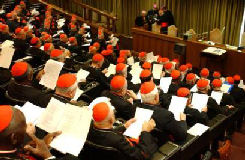

Most early Bishops of Rome were evidently elected by Romans. Centuries elapsed before outsiders claimed any say in the determination of Rome’s bishop. Sometimes only the Roman nobility participated; sometimes voting was limited to the clergy; sometimes even the rabble was given a voice. How was such an ungainly-sounding process managed?
The Roman Church
Rome in the first century was a megalopolis of over a million people, probably the largest city in the world. The Christian community in Rome never approached majority status during the empire’s heyday. The official imperial religion was what we today call paganism – worship of Jupiter, Minerva, Venus, etc. A large cult devoted to Mithras, a god the Romans expropriated from the Persians, was especially strong in the military sector. Rome’s Christian community developed as an offshoot of the Jewish settlement and spread fairly rapidly among Rome’s ever-growing immigrant population. Several emperors actively suppressed Christianity, and it never became mainstream until Constantine’s time. Many factors mitigated the growth of the Church of Rome. The Roman empire’s unbroken ascendancy gave way to up-and-down periods. Roman armies lost battles. Barbarians settled on the edges of the empire. Rome itself was devastated by plagues in the second and third centuries; during portions of the 250’s and 260’s Romans reportedly succumbed at the rate of five thousand per day! By Constantine’s time – the early fourth century – an estimated 2.5 to three million Christians lived in an empire with a population that exceeded one hundred million. Some emperors were cruel or even psychopathic dictators with no use for Christians. Theoretically the empire tolerated all religions, but if something went wrong – like the burning of Rome in Nero’s time – someone had to be blamed, and blame tended to run downhill. In 250 a widespread persecution was implemented; Pope Fabian died in prison. Sixtus II was beheaded by the emperor’s men in 258; all seven of his deacons met the same fate. Several other popes are listed as martyrs. It is safe to say that prior to Constantine the Christian community in Rome was by necessity discreet. It was probably formed of closely knit cells. During periods of outright imperial persecution the clergy was probably forced underground. Sometimes there was no bishop. For example, the official list shows a two-year vacancy after Sixtus II’s execution and a four-year gap after Pope Marcellinus’s term. It is even possible that during some periods groups may have made decisions for the congregation. In other parts of the empire the local church was often governed by committees of elders; possibly the same thing occurred in Rome. As more Romans converted to Christianity, the Roman Church grew wealthy. There is good evidence that its largesse toward other congregations was considerable, and the Bishops of Rome probably controlled the purse strings. As their influence grew throughout the empire, some, like Victor I and Stephen I, claimed to outrank other bishops. They either cited the scriptural quotation from Matthew or made the argument from authority – that the Roman Church had been founded by the two greatest apostles. Did the other bishops agree? Some probably felt financial or political pressure to maintain good relations with Rome, and they sometimes conceded primacy. The eastern bishops, who received their funding directly from Constantinople and were intimately familiar with the far less persuasive Greek version of the “Keys of the Kingdom” verses,[13] were less submissive from the beginning. A few bishops vacillated. For example, when Cornelius was pontiff, Cyprian, the Bishop of Carthage, wrote a treatise promoting the Bishop of Rome as the unifying figure of Christianity. However, he so disliked Cornelius’s successor, Stephen I, that he reworked the document to deny that the Bishop of Rome could trace his authority to St. Peter.Practically speaking, it mattered little whether the other bishops treated the Bishop of Rome as their commanding officer. The pope could not do much to them. He could excommunicate a bishop, but the bishop could excommunicate the pope, too. The pope had no say in the selection of bishops. The reverse was also true; the bishops did not select the pope.
* * *
It is probably just as well that Sr. Mary Immaculata was never pressed to teach us about the first thirty or forty popes. For hundreds of years the papacy was a confusing and evolving work in progress. Many early popes seem nondescript; a few were more assertively papal. Even the porous brains of my classmates might have noticed the lack of procedure for selecting the next pope. It is hard to imagine how S’ter would have explained such anarchy, but she would have quickly fashioned a coherent response. She always did.
[1] No one knows her name, and no one knows why Clement/Eusebius emphasized that Peter used his wife’s name but never specified what it was.
[2] Since the word “bishop” is hardly even used in the New Testament, it might be better to say “Peter performed the equivalent of episcopal functions in.”
[3] Although according to the CIA, Turkey is 99.8% Muslim, since 1724 Antioch has had a Melkite Patriarch, a Maronite Patriarch, a Syrian Orthodox Patriarch, and a Greek Orthodox Patriarch. The Melkites and Maronites are in communion with the Roman Catholic Church.
[4] There are actually thirteen letters, but the Church considers six spurious. Some scholars doubt the authenticity of all thirteen.
[5] Among many other heresies, Ireneus attacked the claim that Jesus was crucified after only a few years of ministry. Ireneus argued that He lived into old age as an example for people of all ages. Although the gospels clearly state that His career as a preacher lasted three years or less, Ireneus considered this notion absurd.
[6] “Many cities of Italy, France, and Germany preserve the remains of this pontiff; but if all these bones were gathered together, one hundred bodies of natural size might be formed from them.” Cormenin, op. cit., Vol. 1, p. 25.
[7]
This line leads to other difficulties. The part of Jesus’s life skipped over by the gospels is open to speculation. Englishmen think that Joseph of Arimathea brought Him to England. William Blake wrote a poem that starts,
And did those feet in ancient time
Walk upon England's mountains green?
Mormons profess that Jesus visited the new world after the resurrection. Nicolai Notovich and Holger Kirsten, among others, place Him and His mother Mary in India.
[8] The significance of this distinction is treated in Appendix 2.
[9] “If one assumes that there was no rivalry between Peter and Paul, the reason for Paul’s not mentioning Peter must have been that he knew nothing of Peter’s stay in Rome: in other words until approximately A.D. 55 Peter had not come to Rome.” Bernard Schimmelpfennig, The Papacy, Columbia University Press, New York, NY, 1992, translated by James Sievert, p. 4.
[10] Of course, the Church reserves the right to determine which traditions are “divine.”
[11] Rendina notes that the section about Paul’s arrival in Rome in 61 doesn’t mention Peter. Claudio Rendina, op.cit., p. 16.
[12] The first thirty-five popes are all officially considered saints – over three hundred years of non-stop holiness.
[13] See Appendix 2.
 | |
 | |
Bankable Bar Bets
$ The evidence that St. Peter was the Bishop of Antioch is much stronger than the evidence that he was ever Bishop of Rome.
$ It has been reliably reported that St. Peter personally raised Clement to the level of Bishop of Rome. If so, there must have been between two and four Bishops of Rome at the same time.
$ St. Peter was married and reportedly had at least one child.
$ The method of selecting the pope was not established until 1059.
$ The oldest extant list of the Bishops of Rome dates from the end of the second century.
$ St. Ireneus, who composed the list, insisted that Jesus survived into old age.

